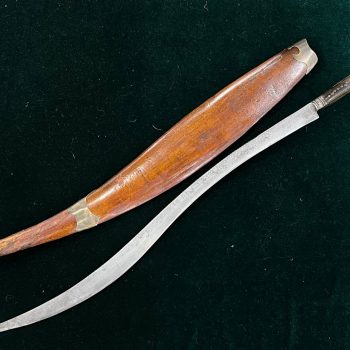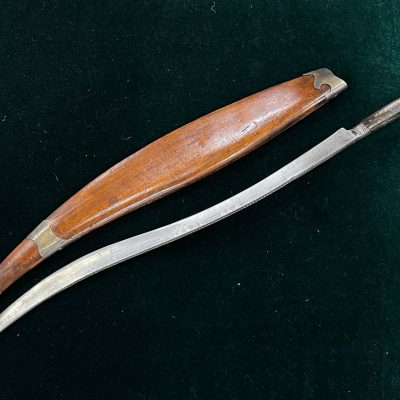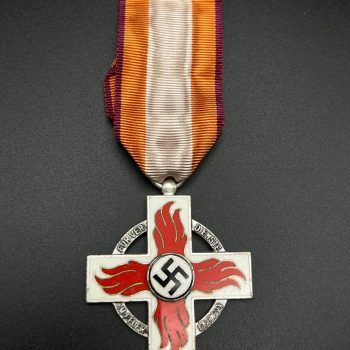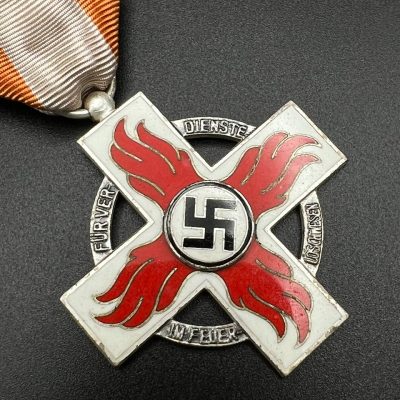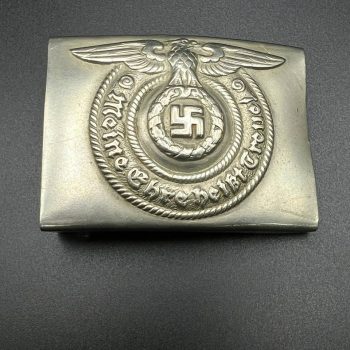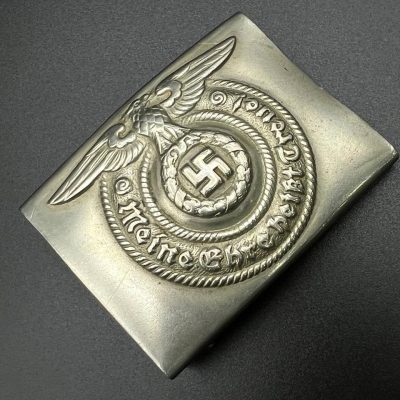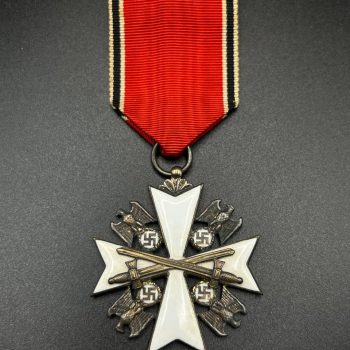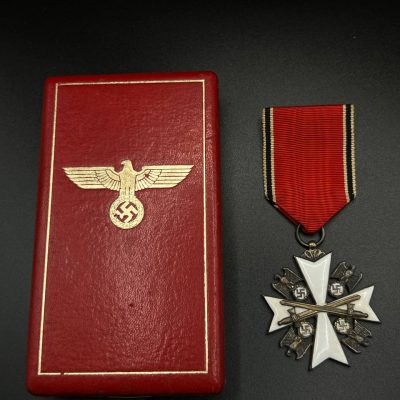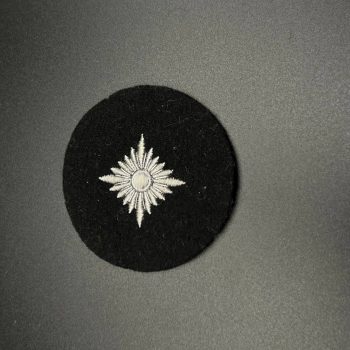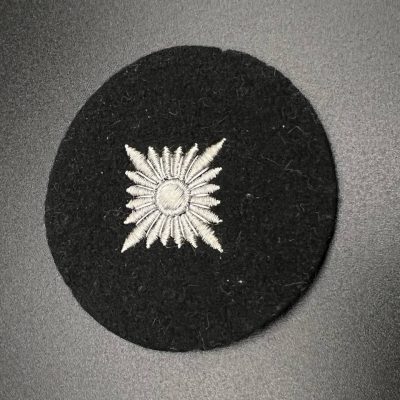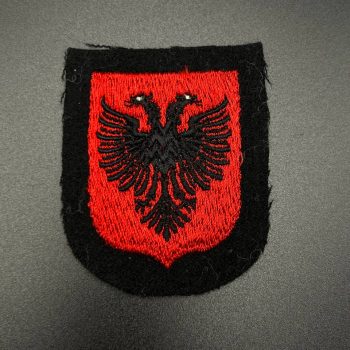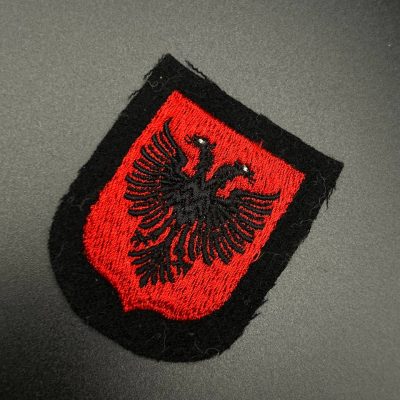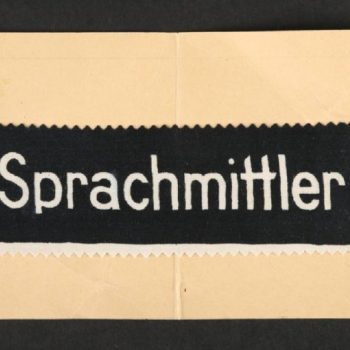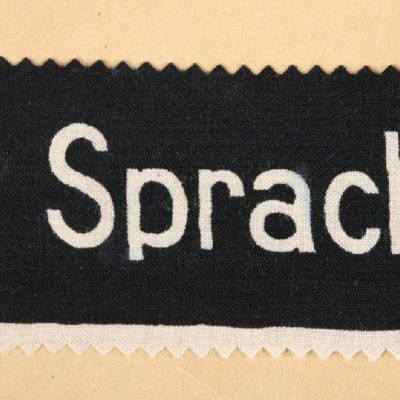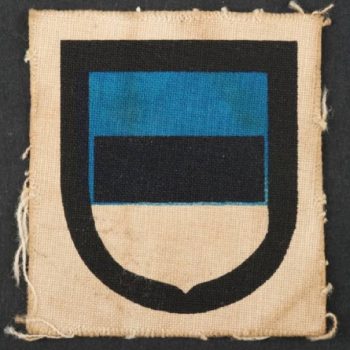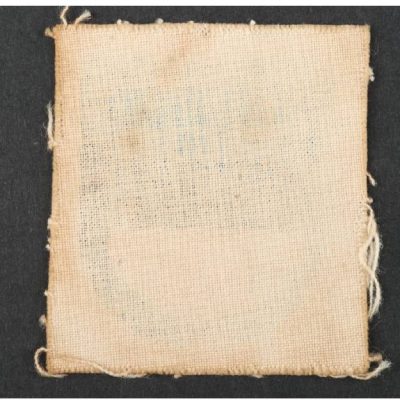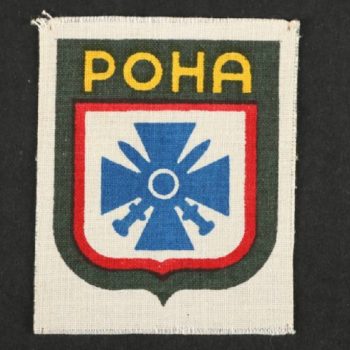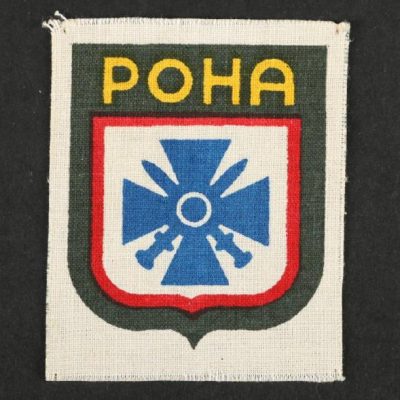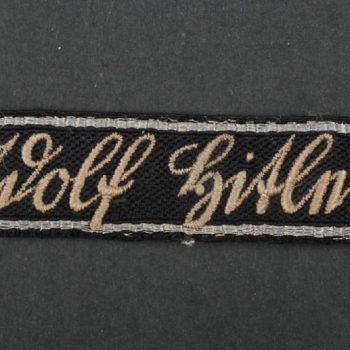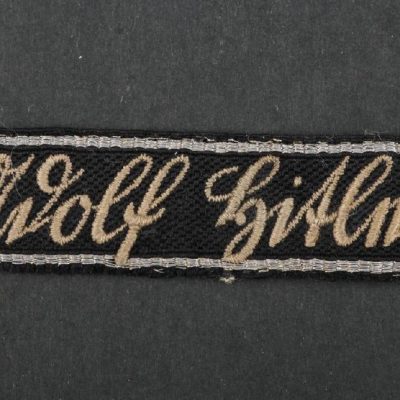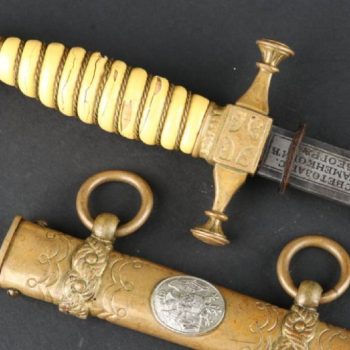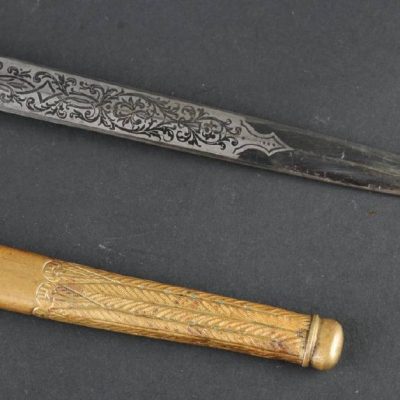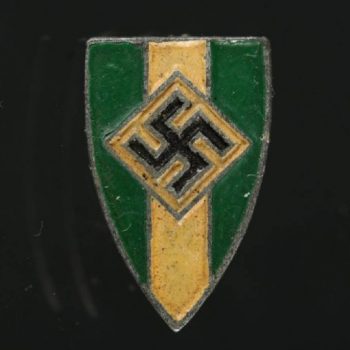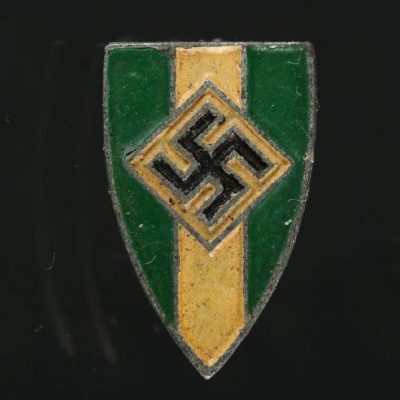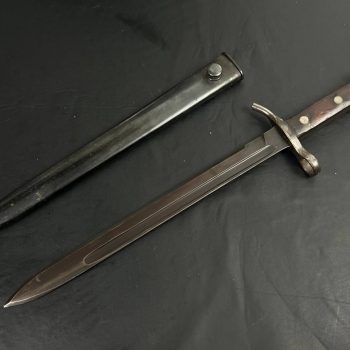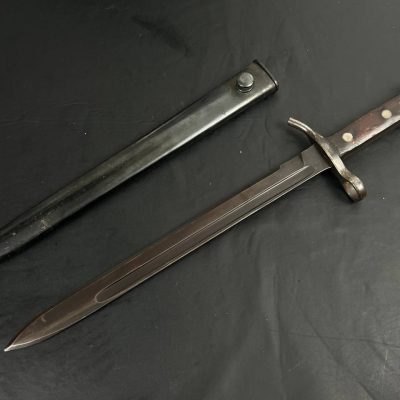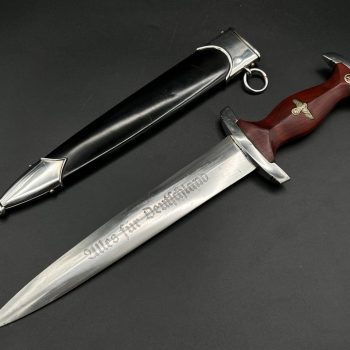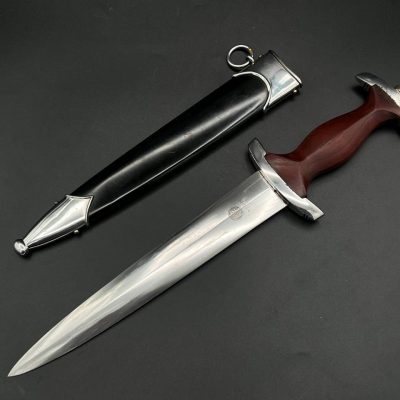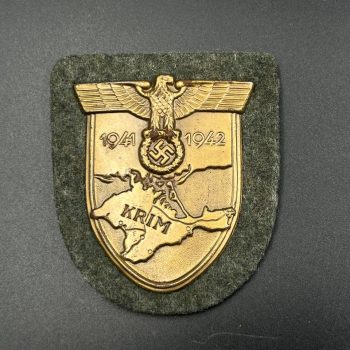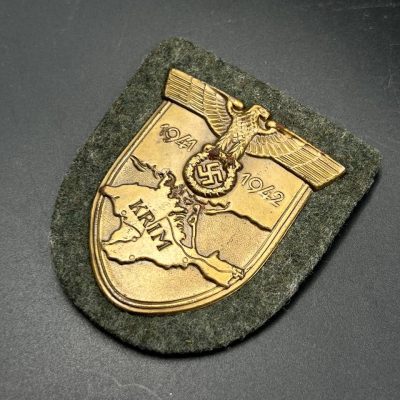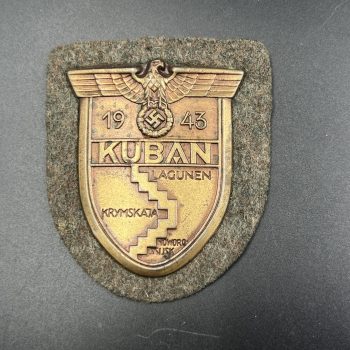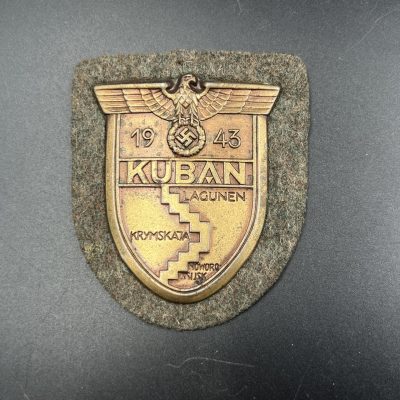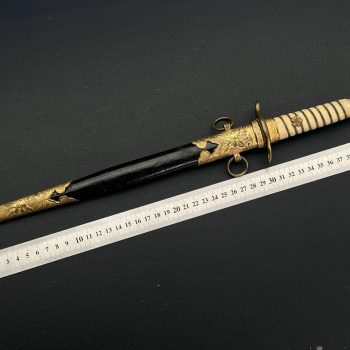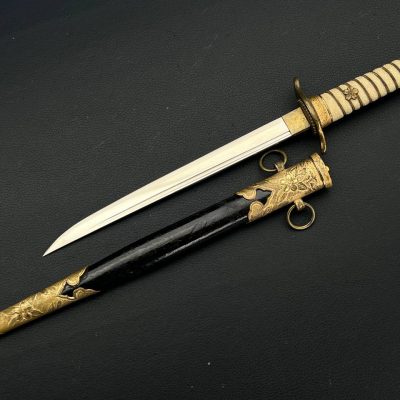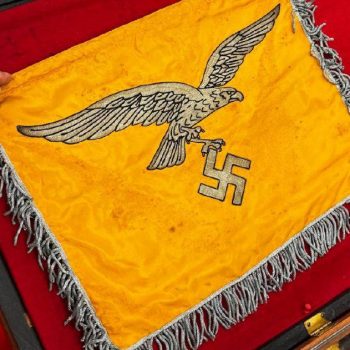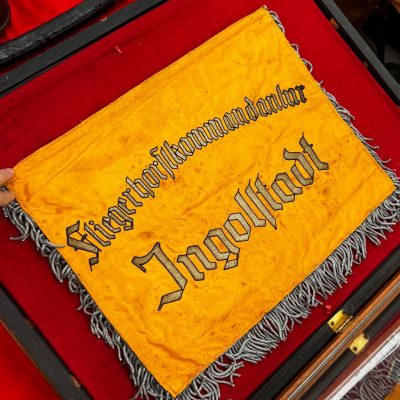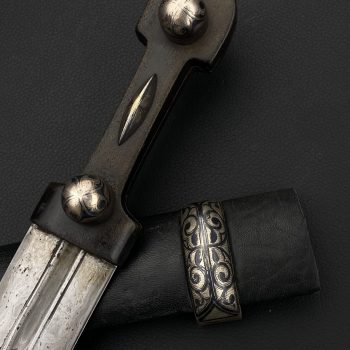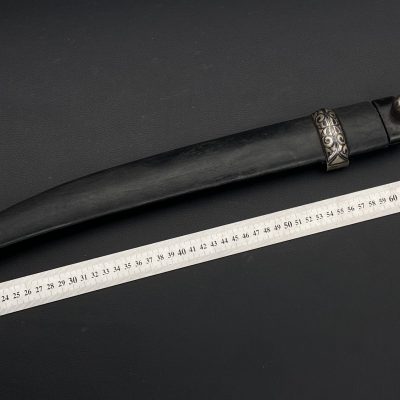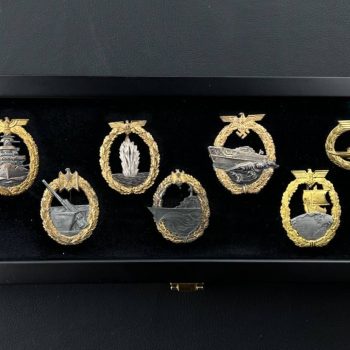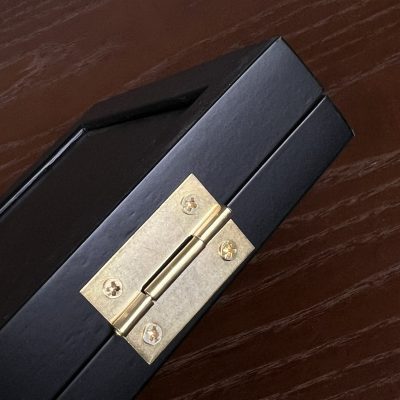Showing 1–16 of 59 results
Filters-
2nd Class Fire Brigade Decoration (Lot: 174)
Auction EndedOriginal 2nd Class Fire Brigade Decoration (Feuerwehrehrenzeichen 2. Klasse), instituted in Germany to honor firefighters for long and faithful service.
The award features a metal cross with a swastika in the center and an inscription on the reverse. The 2nd Class was awarded for 25 years of service. It was worn on a red and white ribbon.
A well-preserved piece, representing the history of civil awards in the Third Reich. A valuable addition to collections focused on firefighting, public service, or German decorations.
SOLD for $ 375 -
SS Belt Buckle, Nickel Silver (SS Koppelschloss, Neusilber) (Lot: 167)
Auction EndedOriginal early-type SS belt buckle made of nickel silver (Neusilber). The front features a detailed depiction of the SS eagle clutching a wreath with a swastika, surrounded by the motto: “Meine Ehre heißt Treue” – “My honor is loyalty.”
Nickel silver buckles are among the earliest and highest-quality variants, primarily issued to members of the Allgemeine-SS before the outbreak of World War II. They are known for their sharp detail and durability.
SOLD for $ 1,000 -
Cased Third Class Eagle Order with Swords – Godet (Lot: 153)
Auction EndedThis Third Class Eagle Order with Swords is a stunning piece. The top quality white enamel on both sides is clean and perfect, with no chips. The beautifully detailed silver eagle emblems have taken on attractive dark age toning. The suspension ring is intact. This attractive cross is complete with its original ribbon, which is crisp and clean, with only extremely slight age toning. The original pin attachment on the reverse is functional and is neatly hand stitched in place. The original case of issue is present, and is in outstanding condition, with bright original color and nearly full original surface to the crimson leather covering. The large, bold, embossed German eagle and swastika emblem on the lid is virtually perfect. The clasps on the case are intact and functional. Inside the case, the white silk lining for the lid is marked with the German designation of the award. There is very slight patina to the white silk lining. The cross lies on an insert lined with a fine black velvet, which is perfect. It would be hard to find a better example of a 3rd Class Eagle Order with Swords. The condition rates as excellent plus overall.
SOLD for $ 1,695 -
Sleeve Shield for Albanian Volunteers in the 21th Mountain Division of Waffen SS “Skandberg” (Lot: 140)
Auction EndedBlack cloth base, machine-embroidered red shield with black Albanian eagle, with white eyes, at centre.
Unissued and in mint condition.
SOLD for $ 145 -
Russian Liberation Army Cuff Titles “Sprachmittler” – Manufaturers Proof (Lot: 138)
Auction EndedAn incredibly rare cuff title “Sprachmittler” Interpreter for the Staff of the RAO, Russian Liberation Army. This is also a manufacturer’s proof by Genzsch & Heyse in Hamburg. The common literature shows only a graphic interpretation of the actual offered cuff title in “Foreign Legion of the Third Reich” Volume 4, by David Littlejohn, 1987, Page 342.
Printed in black on cotton and adhered to the manufacturers proof card.
The Russian Liberation Army (German: Russische Befreiungsarmee; Russian: Русская освободительная армия, Russkaya osvoboditel’naya armiya, abbreviated as РОА or ROA) was a collaborationist military force primarily made up of Russian soldiers that fought alongside Nazi Germany during World War II. It is also known as the Vlasov Army (Власовская армия, Vlasovskaya armiya) after its leader, Andrey Vlasov, a former Red Army general who defected to the German side. The soldiers of this army were often referred to as Vlasovtsy (Власовцы). In 1944, the group became formally known as the Armed Forces of the Committee for the Liberation of the Peoples of Russia (Вооружённые силы Комитета освобождения народов России, Vooruzhonnyye sily Komiteta osvobozhdeniya narodov Rossii, abbreviated as ВС КОНР or VS KONR). From January 1945 onward, the army was commanded by Vlasov himself.
SOLD for $ 560 -
Estonia/Eesti – Sleeve Shield for the 20th Waffen Grenadier Division der SS (Estonian No. 1) (Lot: 135)
Auction EndedWhite cotton backing, printed shield of balue, black and white with black surrounding.
UV negative and unissued.
SOLD for $ 550 -
Sleeve Shield for Russian Liberation Peoples’ Army – R.O.N.A. (Lot: 133)
Auction EndedWhite cotton backing, printed shield of green, red, with the blue cross of St. George with swords and “POHA” in yellow lettering.
Unissued and eceedindly rare.
The Russian Liberation People’s Army (Русская освободительная народная армия, Ruskaya osvoboditelnaya narodnaya armiya, abbreviated as RONA) was established in late 1941 as an auxiliary police force with around 200 personnel. By mid-1943, it had expanded to 10,000–12,000 men, equipped with Soviet tanks and artillery captured by the Germans. Led by Bronislav Kaminski, the unit was initially called the Russian People’s Liberation Army (Русская освободительная народная армия), and it became a semi-independent militia. In 1942, Kaminski enforced a forced mobilization of local civilians into his militia, transforming it into a regular fighting force within the Lokot Autonomy, a self-proclaimed “republic” under Nazi control, and a private army that answered directly to him.
After the German defeat at the Battle of Kursk in August 1943, RONA retreated to the Byelorussian region, particularly around the Lepel area in Vitebsk. There, they participated in security operations alongside German forces, committing numerous atrocities against the local civilian population. In June 1944, RONA was formally incorporated into the Waffen-SS. Following the Soviet counteroffensive in Operation Bagration (June to August 1944), the remnants of the Kaminski unit retreated further west. By the end of July 1944, between 3,000 and 4,000 men (some sources estimate up to 6,000 or 7,000) regrouped at the SS training camp at Neuhammer (now Świętoszów). Using the Kaminski unit as a base, SS leaders planned to form the 29th Waffen Grenadier Division of the SS RONA (1st Russian).
SOLD for $ 850 -
SS cuff title “Adolf Hitler”. (Lot: 131)
Auction EndedUniform removed partial cuff title. Enlisted version with aluminum thread edges and light brown, machine woven embroidered Sütterlin script as introduced in 1940.
SOLD for $ 1,900 -
Yugoslavian police officer’s dagger with hanger. (Lot: 130)
Auction EndedThis Royal Yugoslavian police officer’s dagger was produced in Germany and has a nickel-plated steel blade, magnetic, features semi-sharp edges and a sharp tip. Both sides of the blade are etched with intricate foliage patterns, with one side displaying the crowned crowned double headed eagle of Serbia. The ricasso is maker marked on one side and has serbian inscription on the other. The blade fits securely into a brass handle, with a thin leather washer around the base, showing typical marks from extraction.
The crossguard has the inset into the obverse side of the crossguard with a functional push-button release that connects to the spring clip emerging from the blade’s ricasso. The handle is made from a single piece of composit mimicking bone, with ribbing that spirals around the handle. The ribbed sections feature an inset twisted wire that extends to the pommel, which is adorned with an intertwining knit pattern. Sme chipping and cracking of the plastic like material.
The scabbard is made of gilded bronze with a lightning design along most of its length. Two decorative bands with rope patterns and brass rings are attached for a hanger. The scabbard shows some wear and contact, but both the blade and scabbard are in very good condition.
Hanger: Velvet underlaid leather with brass fittings.
Signs of wear.
SOLD for $ 1,100 -
Austria – Membership Pin of the German Youth in Untersteiermark (Lot: 129)
Auction EndedZink painted and in slightly worn condition with yellowing of thew white paint. On safety pin for wear.
SOLD for $ 180 -
Mosin-Nagant Bayonet Knife Model 1935 – Hackman (Finland) (Lot: 128)
Auction Endedoriginal bayonet knife for the Mosin-Nagant rifle, Model 1935, manufactured by the Finnish company Hackman & Co. This type of bayonet was issued to Finnish armed forces and represents a distinct Finnish modification designed for use with Mosin rifles during the 1930s and throughout the Winter War.
The blade is single-edged with a pronounced fuller and remains in good condition, showing no major damage or signs of excessive sharpening. The ricasso bears the clearly stamped original “Hackman” marking. The handle features wooden grips with metal fittings, and the locking mechanism is fully functional.
This bayonet knife shows natural aging and patina consistent with its age but remains complete and unrestored. A fine example for collectors of edged weapons, Finnish militaria, or 20th-century wartime artifacts.
SOLD for $ 300 -
NSKK Dagger Model 1933, RZM M7/73 – Helbig (Lot: 119)
Auction Endedoriginal NSKK dagger, Model 1933, bearing the RZM M7/73 mark, attributed to Paul Helbig, Steinbach (Thüringen) – an officially licensed manufacturer during the Third Reich era. This dagger is an authentic early-period piece, representing the standard design issued to members of the National Socialist Motor Corps (NSKK).
The blade features the iconic NSKK motto “Alles für Deutschland” (“Everything for Germany”), which remains clearly legible with no major corrosion or damage. The RZM stamp and manufacturer’s code are crisp and match the specifications of mid-1930s production standards.
The grip is crafted from original wood, fitted with the NSKK eagle emblem and inlaid swastika, all well-preserved and unrestored. The scabbard is also original, showing natural age patina without significant dents or losses.
Overall, the dagger is in excellent condition for its age — the blade has not been sharpened, fits tightly into the scabbard, and the locking mechanism functions properly. A highly collectible and historically significant example, especially desirable due to its rarer manufacturer mark.
SOLD for $ 1,495
Sold at Blitz price
-
Japanese Naval Officer’s Dagger, Model 1883. (Lot: 62)
Auction EndedAn original Japanese naval officer’s dagger, Model 1883, is offered for sale.
This type of dagger was used by officers of the Imperial Japanese Navy from the late 19th century up to the early stages of World War II.
Specifications:
- Original blade with traditional shape
- Brass guard featuring naval insignia
- Grip wrapped in leather or traditional material (specify if known)
- Metal scabbard with period-correct fittings
- Condition: Good, with natural patina and signs of age
A rare and valuable piece for collectors of edged weapons and Japanese military history.
Product sold for blitz price: $ 1,450 -
German WWll Luftwaffe Trumpet Banner (Lot: 49)
Auction EndedThe front side features the Luftwaffe eagle, while the reverse side bears the inscription:
“Fliegerhorst Kommandantur Ingolstadt” (Airfield Headquarters Ingolstadt).
Fliegerhorst Ingolstadt-Manching Airfield
Construction of the airfield began in 1936 with the creation of taxiways, and from spring 1937 onward, various buildings were erected. In April 1938, the completed airfield was handed over to the military and officially named “Fliegerhorst Ingolstadt”.
During World War II, the base hosted various flight schools, including fighter and night-fighter schools, which operated Messerschmitt Bf 110 aircraft.
The Bf 110 was actively used during the French campaign, in the Battle of Britain (where it proved vulnerable against RAF fighters), and later as a night interceptor defending the Reich.
Its primary equipment included radar systems and heavy armament for engaging enemy bombers.
From mid-1944, the airfield was heavily bombed by Allied forces, with particularly intense raids in April 1945.
On April 26, 1945, the airfield was captured by the United States Army.
Product sold for blitz price: $ 4,250 -
Display case 6×14″ (Lot: 40)
Auction EndedOriginal Warstory display case. Features museum-quality, non-reflective glass with UV protection. Material: alder wood.
Product sold for blitz price: $ 110
